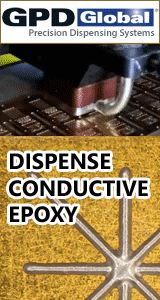Printed Circuit Board Assembly & PCB Design Forum
SMT electronics assembly manufacturing forum.
- SMTnet
- »
- Electronics Forum
- »
- Non-wetting: PTH on double-side reflow
Non-wetting: PTH on double-side reflow
![]() We process a double-side reflow board (10 ups). Chips and IC...
- Apr 06, 2005
by
SMT_Engr
We process a double-side reflow board (10 ups). Chips and IC...
- Apr 06, 2005
by
SMT_Engr
![]()
![]()
![]() did you try using double header connector pin of a different...
- Apr 06, 2005
by
did you try using double header connector pin of a different...
- Apr 06, 2005
by
![]()
![]()
![]() Hi SMT Engr
With a double-header connector do you mean Do...
- Apr 06, 2005
by
Patrick Bruneel
Hi SMT Engr
With a double-header connector do you mean Do...
- Apr 06, 2005
by
Patrick Bruneel
![]()
![]()
![]() I've tried a different lot of the same double header connect...
- Apr 06, 2005
by
SMT_Engr
I've tried a different lot of the same double header connect...
- Apr 06, 2005
by
SMT_Engr
![]()
![]()
![]() Are you saying you have solder balls (as in solder paste bal...
- Apr 06, 2005
by
Are you saying you have solder balls (as in solder paste bal...
- Apr 06, 2005
by
![]()
![]() It is the solder ball that's usually encountered in a reflow...
- Apr 06, 2005
by
SMT_Engr
It is the solder ball that's usually encountered in a reflow...
- Apr 06, 2005
by
SMT_Engr
![]()
![]()
![]() Can you please decrease the ramp rate of your reflow profile...
- Apr 13, 2005
by
Can you please decrease the ramp rate of your reflow profile...
- Apr 13, 2005
by
![]()
![]() Some weeks has passed,Can SMT eng. show us your results of t...
- Apr 25, 2005
by
Some weeks has passed,Can SMT eng. show us your results of t...
- Apr 25, 2005
by
- SMTnet
- »
- Electronics Forum
- »
- Non-wetting: PTH on double-side reflow







